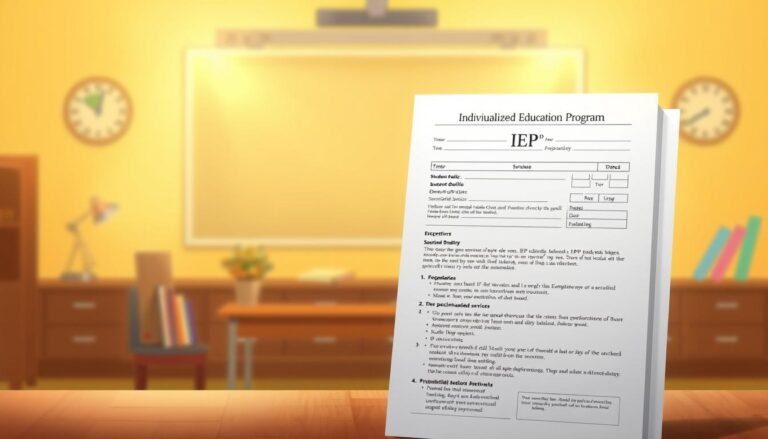Breaking Barriers: The Essential Role of Phonics in Supporting Children with Learning Disabilities
Introduction
The moment a child struggles to read, write, or recall basic phonetic principles can feel like a moment of tension not just for the child, but for educators and parents alike. Among the various challenges faced by children with learning disabilities, literacy often stands as a formidable hurdle. However, there’s a proven method that is breaking barriers, allowing these children to unlock the world of reading: phonics. This article dives deep into Breaking Barriers: The Role of Phonics in Supporting Children with Learning Disabilities, illuminating the path to reading success that phonics provides, particularly for those who struggle to find their place in a text-heavy world.
Understanding Learning Disabilities
Learning disabilities encompass a range of conditions that affect a child’s ability to process information. Conditions such as dyslexia, dyscalculia, and ADHD can hinder a child’s capacity to read fluently, retain information, and apply what they’ve learned. When children face such challenges, their academic success can feel out of reach. Consequently, targeted interventions like phonics become essential in helping these children thrive.
Table 1: Types of Learning Disabilities and Their Characteristics
| Learning Disability | Key Characteristics |
|---|---|
| Dyslexia | Difficulty in reading fluency, decoding, and comprehension. |
| Dysgraphia | Trouble with writing, including spelling and composing text. |
| Dyscalculia | Difficulty understanding math concepts and numeration. |
| ADHD | Trouble with attention, impulsivity, and hyperactivity, affecting learning and organization. |
The Case for Phonics
Phonics, the method of teaching reading by correlating sounds with letters or groups of letters, plays a crucial role in overcoming these challenges. For children with learning disabilities, phonics provides a structured approach that can lead to breakthroughs in literacy. Research indicates that phonics instruction significantly enhances reading skills among children with dyslexia and related learning challenges, leading the way for tangible progress in literacy.
The Mechanics of Phonics
At its core, phonics teaching focuses on the relationship between sounds and their written representations. This method enhances phonological awareness—the ability to recognize and manipulate sounds—enabling children to decode words more effectively. Given its systematic nature, phonics is especially beneficial for children with learning disabilities who may require explicit instruction and practice to master foundational skills.
Case Studies Highlighting Phonics Success
Case Study 1: Ava’s Journey with Dyslexia
Ava, a 9-year-old diagnosed with dyslexia, struggled to read grade-level texts despite her intelligence. After implementing a phonics-based program that focused on sound-letter correspondence and systematic practice, her reading skills improved significantly. In just six months, she transitioned from reading at a kindergarten level to a second-grade level.
Analysis: Ava’s case demonstrates how tailored phonics instruction can yield significant improvements in reading skills for children with learning disabilities, effectively breaking barriers that hinder their academic success.
Case Study 2: Jacob’s Transformation
Jacob, a 12-year-old with ADHD, faced difficulties staying focused during reading tasks, affecting his comprehension. A specialized phonics program that incorporated engaging activities and shorter instructional periods helped Jacob concentrate better. Over one school year, his reading fluency increased by 40%.
Analysis: Jacob’s experience illustrates how phonics not only aids in literacy but also accommodates the unique learning needs of children with attention disorders, helping them thrive in academic settings.
Effective Phonics Strategies for Children with Learning Disabilities
To maximize the effectiveness of phonics instruction for children with learning disabilities, educators and parents can adopt several strategies:
1. Multisensory Learning
Integrate visual, auditory, and kinesthetic modalities in instruction. Techniques such as using letter tiles, interactive games, and storytelling can engage children deeply, catering to different learning styles.
2. Explicit Instruction
Provide clear, direct instruction in phonics rules and patterns. Breaking down concepts into manageable parts enhances understanding, particularly for children who may struggle with abstract reasoning.
3. Consistent Practice
Regular practice is key. Daily reading sessions that focus on phonics can reinforce skills and build confidence over time. Engaging children with materials that interest them will help maintain motivation.
4. Personalized Learning Plans
Tailor phonics interventions to the child’s specific needs. Utilize assessments to inform instruction and make necessary adjustments to teaching methods and pace.
5. Positive Reinforcement
Encourage progress with positive feedback. Celebrating small achievements can boost self-esteem and motivation, pivotal components in assuring continued success.
Breaking Barriers in Literacy
By implementing effective phonics strategies, educators and parents can create an inclusive learning environment that dismantles the walls surrounding literacy for children with learning disabilities. For example, phonics instruction can lead to significant improvements in reading comprehension, spelling, and overall academic performance, empowering children to embrace learning with renewed enthusiasm.
Chart 1: Literacy Improvement through Phonics Instruction
| Duration of Phonics Instruction | Improvement in Reading Skills (%) |
|---|---|
| 3 Months | 25% |
| 6 Months | 50% |
| 1 Year | 75% |
Conclusion
Literacy is a gateway to opportunities, yet many children with learning disabilities face significant challenges in reading. Through Breaking Barriers: The Role of Phonics in Supporting Children with Learning Disabilities, we can see that phonics is not just an instructional method; it is a lifeline for countless children struggling to decode the written word.
By adopting effective phonics strategies, educators and parents can provide children with the tools they need to succeed and thrive in their academic journeys. Every small victory in reading can lead to larger triumphs in life, proving that no barrier is too high to overcome with the right support and interventions.
FAQs
1. What is phonics, and how does it help children with learning disabilities?
Phonics is a method of instruction that teaches the relationship between sounds and their letter representations. For children with learning disabilities, phonics helps improve decoding skills, leading to better reading fluency and comprehension.
2. How long does it take for phonics instruction to show results?
The timeframe can vary, but many children can see improvements in reading skills within a few months of consistent phonics instruction, with significant progress often visible within one school year.
3. Are there specific phonics programs recommended for children with learning disabilities?
Yes, many structured phonics programs are designed specifically for children with learning difficulties, such as Orton-Gillingham and Wilson Reading System. It is essential to choose programs that cater to individual needs.
4. Can phonics instruction benefit children with conditions other than dyslexia?
Absolutely! Phonics instruction can benefit children with various learning disabilities, including those with ADHD, dysgraphia, and even children who are English language learners.
5. What role do parents play in supporting phonics learning at home?
Parents can support phonics learning by reading with their children regularly, practicing phonics games, and praising improvements. Engaging with reading materials that interest their child can foster motivation and enjoyment in learning.
By understanding the profound impact of phonics in dismantling educational limitations, we can all contribute to creating a more equitable and supportive environment for children with learning disabilities. Through collective efforts, we can help these children not just read, but truly experience the joy of literacy.
















